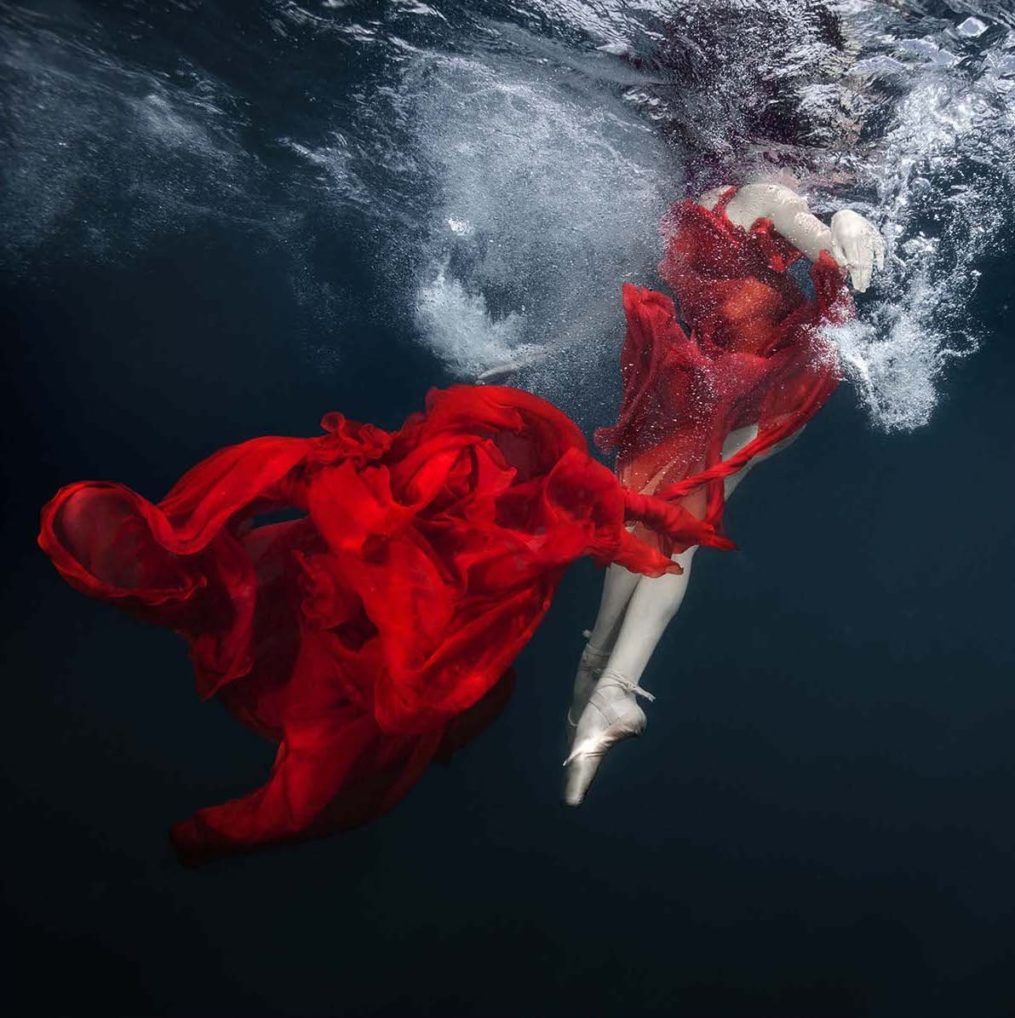
Hangar se profile de plus en plus comme la ‘place to be’ pour la photographie à Bruxelles et en Belgique. Les grands espaces d’un blanc immaculé mettent la photographie d’Isabel Muñoz ( ° Barcelone 1952) splendidement en valeur. Les tirages sont une perfection époustouflante . Oserais-je écrire trop parfaite pour les thèmes abordés : rituels, danses initiatiques, mythes, transes, extase de la souffrance (relire ‘les larmes d’Éros ‘de Georges Bataille). Personnellement je préfère de loin les images plus ‘ brutes ‘ sur des thèmes similaires d’un Dietert Appelt des années septante , mais les images esthétisantes sont redevenus la norme aujourd’hui … Plus de formalité, moins de contenu !
J’ai par contre beaucoup aimé les portraits de nos cousins les grands primates qui ont l’air de nous observer . En ce temps de folie on peut se demander qui est le véritable primate de nous deux. A l’étage une série très touchante de portraits de Louis bourgeois par Jean-François Jaussaud.
Hangar ontpopt zich steeds meer als de ‘place to be’ voor fotografie in Brussel en België. De grote ruimtes in smetteloos wit zijn een ideale setting voor de fotografie van Isabel Muñoz (° Barcelona 1952) . De prints zijn van een verbluffende perfectie. Eigenlijk bijna ‘te perfect’ voor de thema’s die aan bod komen: rituelen, inwijdingsdansen, mythen, trances, extases van pijn … Persoonlijk hou ik veel meer van de ruwere beelden rond gelijkaardige thema’s van bij voorbeeld Dietert Appelt in de jaren zeventig. Maar ja, het esthetiserende is vandaag de dag weer de norm geworden… meer vorm, minder inhoud!
Daarentegen vond ik de portretten van de grote mens-apen echt betoverend. In deze tijd van waanzin kan men zich afvragen wie de echte primaat is.
Op het bovenverdiep vindt U een zeer ontroerende serie portretten van Louise Bourgeois door Jean-François Jaussaud.
With Trance’n’dance, Hangar presents the first major exhibition by Isabel Muñoz in Belgium. Drawing on the works produced by the Spanish photographer and video-maker over the past 10 years, Hangar takes the visitor on a journey into the visual world of an artist who is sometimes called a “body portraitist”. A genuine storyteller, Muñoz “tells” us about the practices and rituals she has observed in the four corners of the world, whether they be related to civilisation or identity, or even be transgressive sometimes. Through the stories of these specific communities, the exhibition showcases a work focused fundamentally on the human condition and its amazing ability to go beyond and abolish limits, both emotional and physical. Precise and always a perfectionist, Isabel Muñoz is constantly sharpening her curiosity and experimenting with the medium of photography. Through it, she succeeds in injecting a certain form of transcendence into her pictures, making visible what our senses may perceive, but cannot put a name to.
Hangar has divided the show into three sections that are both distinct yet fluid, shaped by a number of transversal themes: immanence, trance, and dance.
The first part of the exhibition “Inmanencia” reveals the instinctive part of humans, their attachment to their origins and their land. Both intense and frightening, the butō, a traditional Japanese dance, is a hymn to slowness and introspection. Wishing to evoke taboo subjects in a Japan steeped in tradition, it praises old age and addresses the question of gender. As for the Bolivian dancers covered in clay, they pay homage to Pachamama, the goddess of the Earth, and immerse themselves in their primitive origins. Through Hijras, Isabel Muñoz broaches the question of trans-identity as a specific feature of the human condition, whereas her video, Mujer Árbol, reinterprets the myth of original sin. The artist takes her reflection on human origins further by focusing her lens on the great primates and on Los Españoles (a breed of Iberian horses). These animals are like mirrors of ourselves, whether in the abandonment of an attitude or in the control of their posture.
The exhibition continues with the part “Agua”, composed of recent works made by the artist in the last three years in Japan. Using models committed to the protection of the oceans, Isabel Muñoz dives into the depth of the being who abandons itself to the weightlessness of water. There is a perceptible tension between the “lightness” of the body in movement and the struggle to complete the task, as evidenced in particular by these gestures in contact with plastic residue. Isabel Muñoz, in her attempts to warn us of climate change, is also exhibiting a new project: Coralotipia, produced from the powder of coral.
Finally, “Éxtasis” brings together three series in which Isabel Muñoz sublimates those who transform their bodily suffering into energy and a source of pleasure, achieving a state of trance through their practice: Metamorphosis II or the sessions of body suspension, Two, Three, Four or the shibari in Japan and Nine Gods or the self-mutilation of followers at a Taoist festival. There is palpable tension throughout the exhibition, which reaches its climax in this final chapter. Isabel Muñoz, beyond mysticism, erotic art or bodily transformations seeks to pierce the secret of the body and feelings. Immanence and transcendence then come together in ecstasy that is glimpsed subtly by the eye of the photographer.
The exhibition is made up of a hundred or so pictures and a number of videos and photograms. The platinum-palladium prints were produced by the artist herself in her Madrid studio. Alongside the main Trance’n’danceexhibition, Hangar is also presenting a series of 10 of the artist’s “iconic” images. Trance’n’dance is also published in the form of a “magalogue”.
Isabel Muñoz (1951, ES) lives in Madrid. Biography
Hangar – Photo Art Center
Place du Châtelain 18 Kasteleinplein
1050 Brussels, Belgium
7 €
Tu – Fr : 10-18








